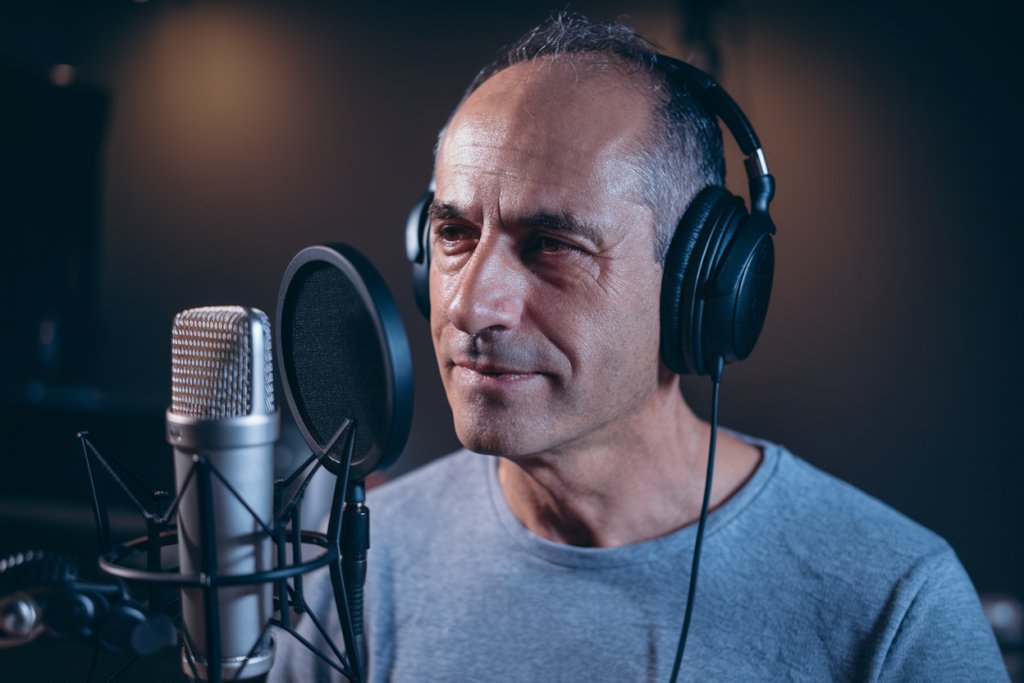When I think about Italian accents in voiceovers, it’s fascinating how they can transform a simple narrative into an enchanting story. The distinct musicality and rhythm of the Italian language brings characters to life and adds depth to any production. But how do you pinpoint that authentic Italian accent?
In this article, I’ll explore key elements that define the Italian accent in voice acting. From pronunciation nuances to regional variations, understanding these aspects will enhance your ability to deliver captivating performances. Whether you’re a seasoned professional or just starting out, mastering the Italian accent can elevate your locution skills and make your work stand out in a competitive field.
Understanding Italian Accent in Dubbing
Italian accents play a crucial role in voiceovers, enriching character portrayal and enhancing audience engagement. By grasping the elements of the Italian accent, voice actors can significantly elevate their performances.
Importance of Accent in Dubbing
Accents shape characters’ identities and cultural backgrounds. Utilizing an authentic Italian accent creates a connection between the character and the audience. It adds authenticity to emotional expressions, making storylines more relatable. Accents also distinguish characters from one another, providing depth that enhances overall storytelling.
Overview of Italian Accent Features
The Italian accent features distinct pronunciation traits that differentiate it from other languages.
- Vowel Sounds: Italian often emphasizes pure vowel sounds; each vowel maintains clarity.
- Consonant Pronunciation: Consonants like “r” are pronounced with a rolling effect, while double consonants are elongated for emphasis.
- Syllable Stress: Syllable stress typically falls on the penultimate syllable, influencing rhythm and flow in speech.
- Melodic Intonation: The musical quality of spoken Italian is characterized by varied pitch patterns and expressive intonations.
Understanding these features helps me deliver authentic performances that resonate with audiences seeking genuine portrayals.
Techniques to Determine the Italian Accent
Identifying the Italian accent involves recognizing specific phonetic characteristics and common pronunciation patterns. These elements contribute significantly to achieving an authentic portrayal in voice acting.
Phonetic Characteristics
Italian accents feature distinct phonetic traits that stand out in voiceovers. Key characteristics include:
- Vowel Sounds: Italian utilizes pure vowel sounds, meaning vowels are pronounced clearly without diphthongs.
- Consonant Articulation: Rolling consonants, especially ‘r,’ is prominent. This adds a rhythmic quality to speech.
- Syllable Stress: Syllables typically receive stress on the penultimate syllable, altering word emphasis compared to English.
- Melodic Intonation: The intonation pattern often creates a musicality within sentences, enhancing expressiveness.
Recognizing these phonetic traits aids in delivering an accurate representation of an Italian accent.
Common Pronunciation Patterns
Familiarity with recurring pronunciation patterns enhances accent recognition. Notable patterns include:
- Final Vowel Emphasis: Words often end with pronounced vowels; for instance, “casa” (house) retains its final ‘a.’
- Consonant Clusters Simplification: Complex clusters simplify; “st” may sound like “s.”
- Diphthong Reduction: Diphthongs common in English are less frequent; instead, single vowel sounds prevail.
- Sibilance Variation: The ‘s’ sound can vary between sharp and soft pronunciations based on surrounding letters.
Understanding these patterns enables effective interpretation of the Italian accent, crucial for authentic character delivery in voice acting.
Factors Influencing Italian Accent in Dubbing
Understanding the factors that influence the Italian accent in dubbing is crucial for authentic voice portrayal. Two key areas to explore are regional variations and cultural influences.
Regional Variations
Regional variations significantly affect the Italian accent. Italy’s diverse linguistic landscape includes numerous dialects, each with distinct phonetic characteristics. For instance:
- Northern Dialects: Regions like Lombardy and Veneto showcase different vowel pronunciations, often featuring elongated sounds.
- Central Dialects: In Lazio, where Rome is located, accents tend to emphasize clarity in consonants while maintaining melodic intonation.
- Southern Dialects: Areas such as Sicily and Calabria display a more pronounced rolling of “r” sounds and unique vowel shifts.
These differences impact how voice actors convey character authenticity in dubbing projects. Familiarizing oneself with these regional traits enhances performance quality.
Cultural Influences
Cultural influences also play a vital role in shaping the Italian accent. Various aspects contribute to this dynamic:
- Historical Context: Italy’s rich history has led to language evolution influenced by invasions, trade, and migration patterns.
- Media Exposure: Films, music, and television shape contemporary accents through popular culture trends that reflect modern usage.
- Social Interactions: Everyday conversations among Italians reinforce specific speech patterns and colloquialisms unique to certain regions.
Being aware of these cultural elements allows voice actors to connect more deeply with their characters’ backgrounds while ensuring authenticity in their performances.
Practical Applications for Dubbing Artists
Dubbing artists can significantly enhance their performances by mastering the Italian accent. Understanding its nuances not only improves character portrayal but also engages audiences more effectively.
Training and Practice
Training involves focused exercises that target specific features of the Italian accent. I recommend practicing with phonetic drills that emphasize clear vowel sounds and rolling consonants. Listening to native speakers in various contexts, such as films or interviews, helps internalize pronunciation patterns. Recording my voice while reading scripts allows me to assess my own progress and identify areas for improvement. Engaging in regular practice sessions using dialogues from Italian films or animations facilitates immersion in authentic speech rhythms and intonations.
Tools and Resources
Several tools can assist in mastering the Italian accent for dubbing work. I utilize online platforms offering phonetic breakdowns of words, which aids in understanding sound variations across regions. Language learning applications like Duolingo or Babbel provide structured lessons focusing on pronunciation skills. Additionally, I find it beneficial to refer to resources such as pronunciation guides by linguistic experts or videos featuring accent coaches who specialize in the Italian dialects. Networking with fellow dubbing artists through forums or social media platforms fosters shared knowledge about effective techniques and ongoing training opportunities tailored to the Italian accent.
Conclusion
Mastering the Italian accent in voice acting opens up a world of possibilities for both storytelling and audience connection. By focusing on pronunciation nuances and regional variations, I can create authentic characters that resonate deeply with listeners.
Utilizing specific techniques and understanding phonetic traits allows me to enhance my performances significantly. With consistent practice and the right resources, I can elevate my skills and stand out in the competitive dubbing industry.
Embracing these accents not only enriches my craft but also brings a unique flavor to each character I portray, ultimately making every performance memorable.








